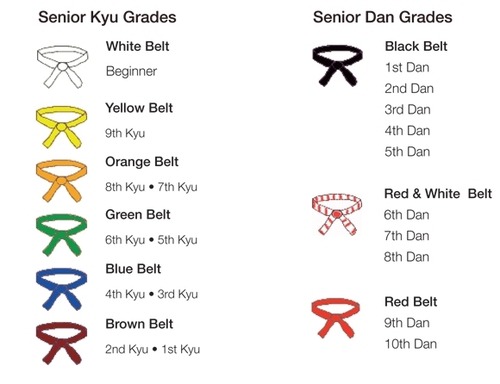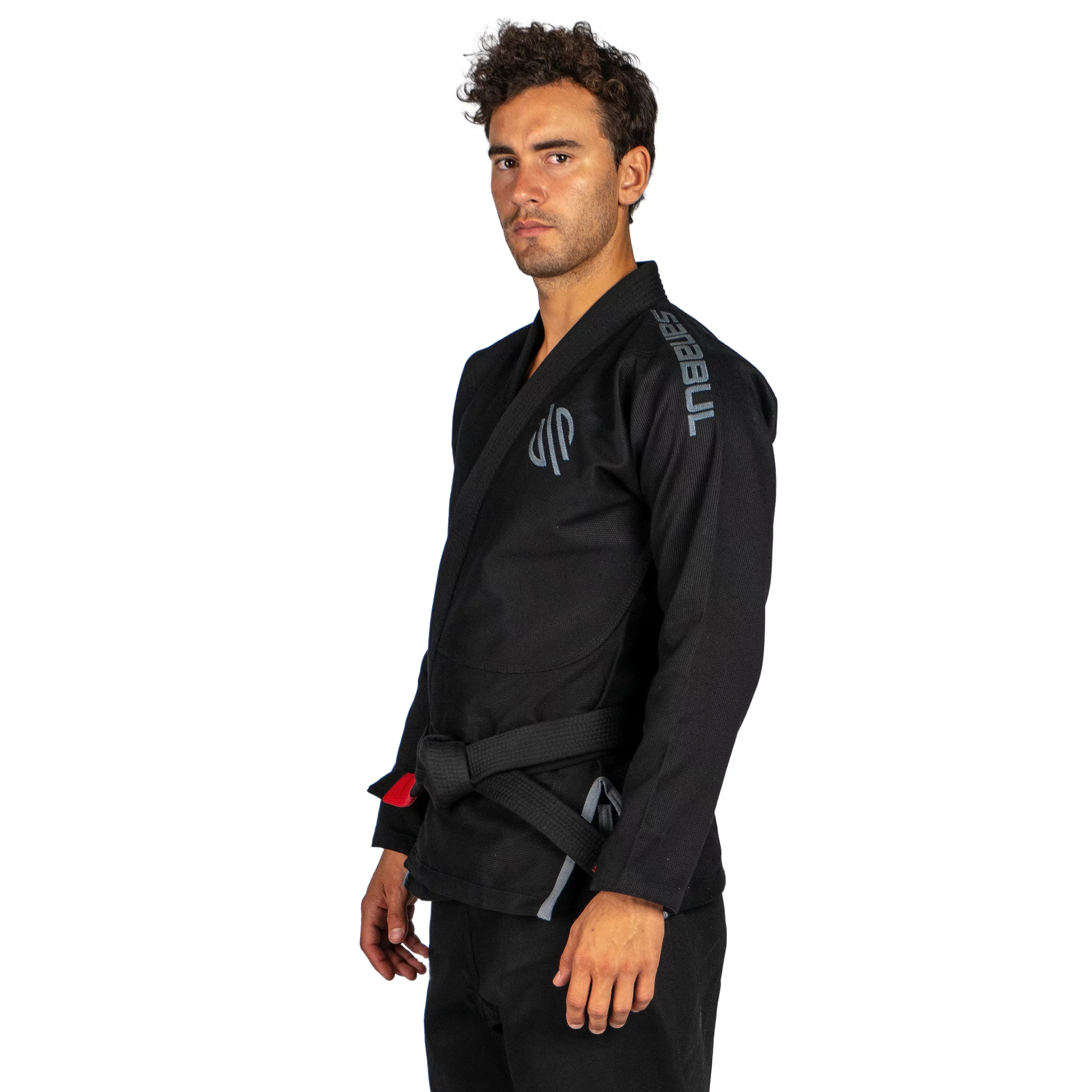
Cameron
Table of Contents
Training martial art is a transformative thing for many people but discovering which one is right for us is a hard decision to make. We firmly believe that choosing a grappling-based martial art (wrestling, BJJ, Judo, Sambo) or a striking-based martial art (boxing, kickboxing) is the way to go, they are the most realistic when it comes to real-world application. BJJ practitioners around the world view their martial art are the most superior because it is one that has stood the test of time. In this article, we will be taking a closer look at the two grappling-based martial arts and comparing them to one another.
Martial Arts: Judo Compared to Jiu Jitsu
Judo and BJJ are two very popular grappling-based martial arts that people mainly use in tandem to become better in mixed martial arts (MMA), other martial arts, and combat sports in general.
In Judo, techniques are much more focused on standing rather than being on the ground like its counterpart in BJJ. In Judo, you will fight your opponents in a standing position and win the match by throwing your opponent to their back. Standup game and mastering the ability to get your opponent on their back are the most important parts of Judo.
When looking at the differences between Judo and jiu-jitsu, the fact that you fight standing seems to be the key difference. In Brazilian jiu-jitsu, you will start standing, but most of the matches you have will be done on the ground. Groundwork and ground techniques are the bread abutter of jiu-jitsu and by the time you become a BJJ black belt, ground fighting becomes second nature.
Most of the grappling techniques you will encounter training jiu-jitsu focus on locks or chokes that get your opponents to tap out. Typical BJJ clubs will teach ground fighting techniques such as how to escape if someone mounts you to the ground or how to work a submission if you are in a side-control position.
Judo and BJJ are two martial arts that are great for martial artists to learn together. There are many things that you can take away from Judo that can be directly applied to your BJJ game and make you a more all-around martial artist. Judo requires a different set of skills compared to BJJ, but generally speaking, the steep learning curve of either martial arts gets cut down when you practice one or the other.
Find the top-rated BJJ Gi's here. Helpful information on what to look for, how to find the best gi, and which brands suit you best based on your budget!
Scoring System and Rules of Judo vs Jiu-Jitsu
Some key differences in Judo vs jiu-jitsu will have to be in the scoring system that is in place for both respective grappling arts.
Scoring System: Judo
In Judo competition there are five different ways to secure a victory.
- Throw an opponent with considerable force and speed leading to the opponent’s back hitting the ground
- Pin and hold your opponent to the ground for 20 seconds
- Chokes
- Arm and Joint Locks
- Referees Decision
Judo competitions rules are by the International Judo Federation (IJF). In Judo you have one goal in the match: scoring an ippon (one full point) or two waza-ari (half point). An ippon is scored by throwing your opponent to the ground in a forceful way but leads to them hitting their back on the ground. Throwing someone on their side results in a half-point (waza-aris).
Scoring System: Brazilian Jiu Jitsu
In BJJ, grappling techniques are used to control opponents and score points while on the ground. You can win a match in BJJ in two ways:
- Win by points
- Win by submission
The point system in BJJ is explained like this:
-
- 2 Points are scored for a takedown
-
- 2 points are scored for a sweep
-
- 3 points are scored for passing an opponent’s guard
-
- 4 points are scored if you get into a mounted position
-
- 2 points are scored if you get a knee-on-belly
- 4 points are scored if you get control of the back (with hooks)
Find the top-rated BJJ Gi's here. Helpful information on what to look for, how to find the best gi, and which brands suit you best based on your budget!
Rules: Judo
Judo and jiu-jitsu share many similarities although they do have some distinct differences especially when it comes to progression. As a beginner in both martial arts, you will start out with a white belt and work your way up to a black belt.
In Judo, there are a higher number of belts that follow this order: white, yellow, orange, green, blue, brown, and black.

Rules: Jiu-Jitsu
BJJ techniques and rulesets are different than what you will find in Judo. While the progression system is the same you will notice that in BJJ there are fewer belts when compared to Judo.
Typically, Judokas progress through belts by demonstrating a specific set of techniques but it is important to note that the rules of progression depends on the Judo clubs instructor. This is not necessarily the case of how progress is made or shown in a BJJ club.
Competition rules and regulations for BJJ are set by the Internation Brazilian Jiu-Jitsu Federation (IBJJF). A BJJ practitioner that finds themselves competing will also find themselves very familiar with the competition rules that is in place by the IBJJF.
Uniforms
Both traditional Brazilian Jiu-Jitsu and Judo uniforms look very similar but they have some minor differences that should be noted. Both martial art forms wear a uniform known as a Gi which could be interchangeable with the word kimono.
The Judo gi is slightly heavier and a bit more durable than the standard kimono in other martial arts like Karate since Judo is a martial art that is predicated on throwing and gripping. On the other hand, the BJJ gi is far more durable and heavier than the Judo kimono because there is much more dynamic movement and grip needed in BJJ.
The gear you will wear in BJJ has many more options when compared to Judo. The Judo gi really only comes in one color while the kimono for BJJ comes in colors including blue, black, and white.
Belts
Judo’s progression system is similar to Brazilian jiu-jitsu’s but there are noticeable differences. In judo, there are 6 belts before reaching your black belt and two more after that, for a grand total of eight belts in the system.
BJJ has a similar color scheme but just less amount of belts to reach along the way.
Gear
As stated earlier in the article, both BJJ and Judo train in uniforms known as the Gi but Brazilian jiu-jitsu has a new budding form known as no-gi where practitioners train in uniforms more similar to what is common in wrestling. The no-gi uniform is simply a rash guard and BJJ shorts.
The kimono in Judo is slightly heavier and is built to withstand throwing and gripping.
BJJ practitioners have more colors to choose from when it comes to their uniform whereas Judo’s Gi is only white.
Find the top-rated BJJ Gi's here. Helpful information on what to look for, how to find the best gi, and which brands suit you best based on your budget!
Which is better Jiu Jitsu or Judo?
Brazilian Jiu-Jitsu focuses on grappling while Judo emphasizes throwing techniques rather than groundwork. Brazilian Jiu-Jitsu is dynamic and requires constant movements, unlike Judo. Judo has fewer physical demands.
Which martial art is better can be a silly question to ask in 90% of cases but if you are serious about training and becoming a better overall version of yourself it is something to definitely contemplate. Striking techniques and more defensive techniques are something that both judo and BJJ lack.
If you are serious about your combat training, you will know that having submission techniques, self-defense techniques joint locks, and various chokes in your back pocket only makes you feel more secure.
Brazilian Jiu Jitsu vs Judo: Which is Right for You?
One of the biggest discussions around the martial arts community is what is better for self-defense, Judo or Brazilian Jiu-jitsu and which is best for you to train. To many people new to martial arts, Judo and BJJ will look similar.
Both BJJ and Judo involve practitioners wearing a kimono known as a Gi and working in a standing position on a mat.
One of the major differences between Judo and BJJ is that Judo focuses more on throwing techniques with very little emphasis on groundwork and BJJ focuses almost entirely on ground work with very little stand-up, throwing, or takedown techniques.
Which one is more popular? Should you do BJJ, Judo, or train both?
What is the Difference Between Judo and Brazilian Jiu-Jitsu?
The main difference between Judo and Brazilian jiu-jitsu can be understood further when looking at the following list below.
Techniques
Judo and BJJ share many similar techniques like joint locks, chokes, and throws. The main difference is how these moves are executed. Judo is more focused on throwing techniques and getting their opponent off balance to get them to the ground, in BJJ you are more focused on chasing after submissions and groundwork.
In Judo, when you forcefully throw someone to their back and their shoulders are on the ground you have effectively won the match, this is known as an ippon. Many of you train BJJ already and know that this is not the case in Brazilian Jiu-JItsu, there is a whole scoring system in place if a submission is not locked in and if someone taps out the match is over. The only way to get someone to tap is to lock in some kind of submission that forces it upon your opponent.
90% of BJJ matches are on the ground or end up on the ground at some point. In fact, in many sparring sessions practitioners will opt to start on the ground to make the rolling environment safer for those around them to work on specific positions.
Find the top-rated BJJ Gi's here. Helpful information on what to look for, how to find the best gi, and which brands suit you best based on your budget!
Which is better for self-defense judo or BJJ?
Judo works and maybe the better self-defense martial art over BJJ. Unlike Brazilian jiu-jitsu, Judo focuses on getting your opponent to the ground from a standing position. While you could argue that judokas may not know what to do on the ground as well as someone that trains BJJ, it is important to note they also do have some locks and chokes in their back pocket.
Standing techniques are extremely valuable for a self-defense scenario. We will always start on our feet but have a high likelihood of ending up on the ground. Training in some kind of grappling sport is better than not training. Both Judo and BJJ are very valuable skills to know and are great ways to protect yourself and get into excellent physical shape.
Judo vs Brazilian Jiu Jitsu: Which is More Effective
Judo and Brazilian Jiu-Jitsu are the two most popular martial arts on the planet. Although they may share many things in common, in many ways the two martial arts are very different when you look deeper into grappling sports.
Brazilian Jiu-jitsu is more focused on groundwork and grappling much like wrestling. Judo, in comparison, emphasizes throws and takedowns and requires an entirely different set of skills to master.
Judo vs Brazilian Jiu-jitsu can seem like a silly topic to most because comparing two martial arts to one another is like comparing apples to oranges, the philosophies and styles are completely different and the reasons someone trains are entirely different.
Find the top-rated BJJ Gi's here. Helpful information on what to look for, how to find the best gi, and which brands suit you best based on your budget!
Examples of Different Types of Grappling Disciplines
-
- Brazilian juju – jujitsu submissions.
-
- No-GI Jiu – Jiu-Jitsu.
-
- Sumo Russian sambo.
-
- Greco-Roman Freestyle Wrestling.
-
- Shuachi Chiao.
-
- Judo
Brazilian Jiu Jitsu and Benefits of Learning BJJ
BJJ is one of the most famous martial arts disciplines to learn. This is due to the massive popularity of the UFC and influencers like Joe Rogan talking about the benefits of training. BJJ involves ground fighting techniques and various submissions that include arm locks, leg locks, and chokes.
BJJ is mart art that is credited to teaching many aspects of life to the people that take the sport seriously. BJJ has been proven to lift people out of bad places and completely transform their lives for the better. The gentle art is taught all across the globe and these days finding BJJ schools is just a simple Google search away.
Takedowns vs Ground Work
Having both the ability to take a resisting opponent to the ground and have your way while on the floor are two important skills one must master if they are looking to protect themselves in a situation where self-defense techniques are needed.
For this reason, we believe that it is wise to have a wide range of martial arts training under your belt. It never hurts to be well-rounded and only improves your game in both respective sports.
The Future of Martial Arts: Judo vs Brazilian Jiu-Jitsu
Right now, people can argue that judo is more widely accepted because of its presence as an Olympic sport but the rise of Brazilian jiu-jitsu should not go unnoticed. BJJ is the fastest-growing and most popular Martial art in the world thanks to people like Joe Rogan and the UFC bringing it to the masses.
No-Gi BJJ will dominate the grappling competition world in the United States. Most Judo clubs will have 10 to 15 people on a mat at a time while most BJJ schools have 20 – 30 or possibly a completely packed house!
Can BJJ Beat Judo?
BJJ practitioners may be more effective on the ground but Judeka’s are still better off if they are standing. Judokas are more adept at ground fighting than BJJ Practitioners. More often than not, Judo’s moves can be superior to BJJ techniques in a fight.
Just What You Need. We designed the Sanabul Essential Jiu-Jitsu Gi to set a high bar for what you can expect from a BJJ gi whether this is your first Jiu Jitsu gi or an addition to your current line up. Quality construction, clean design, and incredible value make this Brazilian Jiu Jitsu gi the #1 Best Seller in the industry
Looking at the differences between judo and BJJ makes the similarities more apparent as well. Both judo and BJJ share the fact that they are grappling-based techniques that help people learn self-defense that can make them feel comfortable in their bodies. When you start training either of the martial art forms you will most likely start off with
Newsletter
Signup for news and special offers!
Thank you!
You have successfully joined our subscriber list.
-

Cameron is the Founder of Grapplers Graveyard. He is an athlete, a life-long learner, and a combat sports enthusiast. His goal is to build websites that help people become smarter, healthier, and happier.
View all posts



